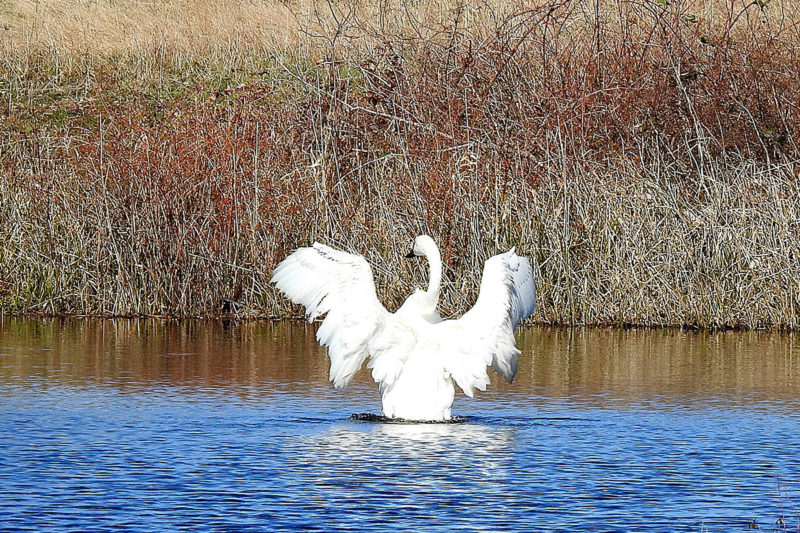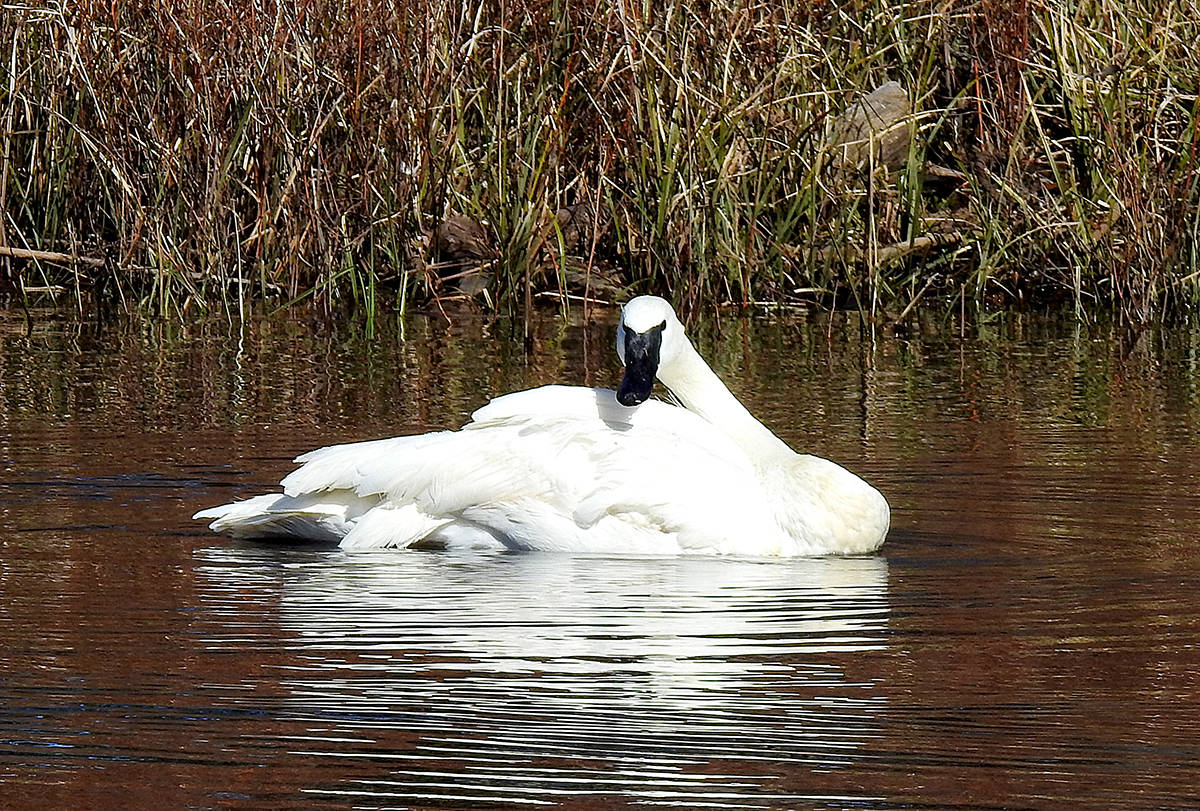When Tanja Kerr spotted an injured swan on Comox Road near the Courtenay estuary in late November, she immediately called the Mountainaire Avian Rescue Society.
Little did she know at the time, the bird had been the subject of an ongoing investigation
“She was actually at the Little River Nature Park originally, and was unable to migrate last year,” said MARS rehab manager Gyl Andersen. “We had sightings reported to us throughout the summer – mostly people just checking in and letting us know how she is doing, but we were not able to capture her at that time. She was too strong.”
MARS representatives responded to Kerr’s call and retrieved the swan, which had a broken wing, and nursed it back to health over the past four months.
READ MORE: WATCH: North Island Wildlife Recovery Centre releases bald eagle into the wild
“By the time she finally got to us, the fracture (left ulna) was already healed, but she needed some physiotherapy in order to have the full range of motion in the wing,” Andersen said.
That the swan survived in the wild despite its injury is a testament to its will.
“It is surprising in some ways, because we have seen the photos from when she was originally injured, and she was quite bloodied, and looked to be in pretty bad shape,” Andersen said. “We are not sure what caused that original injury. But once the injury healed, even though she could not fly, she could flap those wings pretty hard, so I am sure she would have been able to defend herself.”
When the swan was released earlier this month, Kerr was invited to attend.
“I watched her for at least one and a half hours while she was preening and washing herself, she even tried to fly,” Kerr said. “She did not get airborne while I was there, but I would think that if she was hurt and unable to fly for a year, then it would take a bit to regain the strength and muscle power to fly… hopefully she can reunite with nature and her own again.”
READ MORE: Bull moose finds B.C. airport a ‘Garden of Eden,’ feasts before being coaxed to leave
Andersen was not surprised to hear the swan did not immediately take to the air.
“We suspected that she probably would not be able to take flight (immediately). When we did the physiotherapy we were just trying to give her the full range of motion. But she also had to moult her flight feathers, so there are a few of those that would need to regrow before she would really be able to sustain flight. We wanted to release her so that she could spend the summer in her natural habitat, rather than with us.”
MARS had another swan rescue earlier this year, when Ken Speckeen, of West Coast Wildlife Control Services, reported an injured swan found at the Comox Valley Airport airfield in February.
“That one is doing OK – it is a juvenile, and a lot of the first-year swans that we get are quite emaciated, so she still has to gain a few kilograms before she would be able to survive on her own in the wild,” Andersen said. “She is likely to miss her migration at this point, for this year, so there is the possibility that we will release her in the same area as we released the other swan.
“Her wrist is also injured, but there were no fractures that we could find, so it’s just a soft tissue injury.”
READ MORE: Killer whales come close to shore in Nanaimo wild-coast spectacle
Plan your future adventures throughout the West Coast at westcoasttraveller.com and follow us on Facebook and Instagram @thewestcoasttraveller. And for the top West Coast Travel stories of the week delivered right to your inbox, sign up for our weekly Armchair Traveller newsletter!












 ‘Wildlife corner’ eyed for Sooke Basin
‘Wildlife corner’ eyed for Sooke Basin